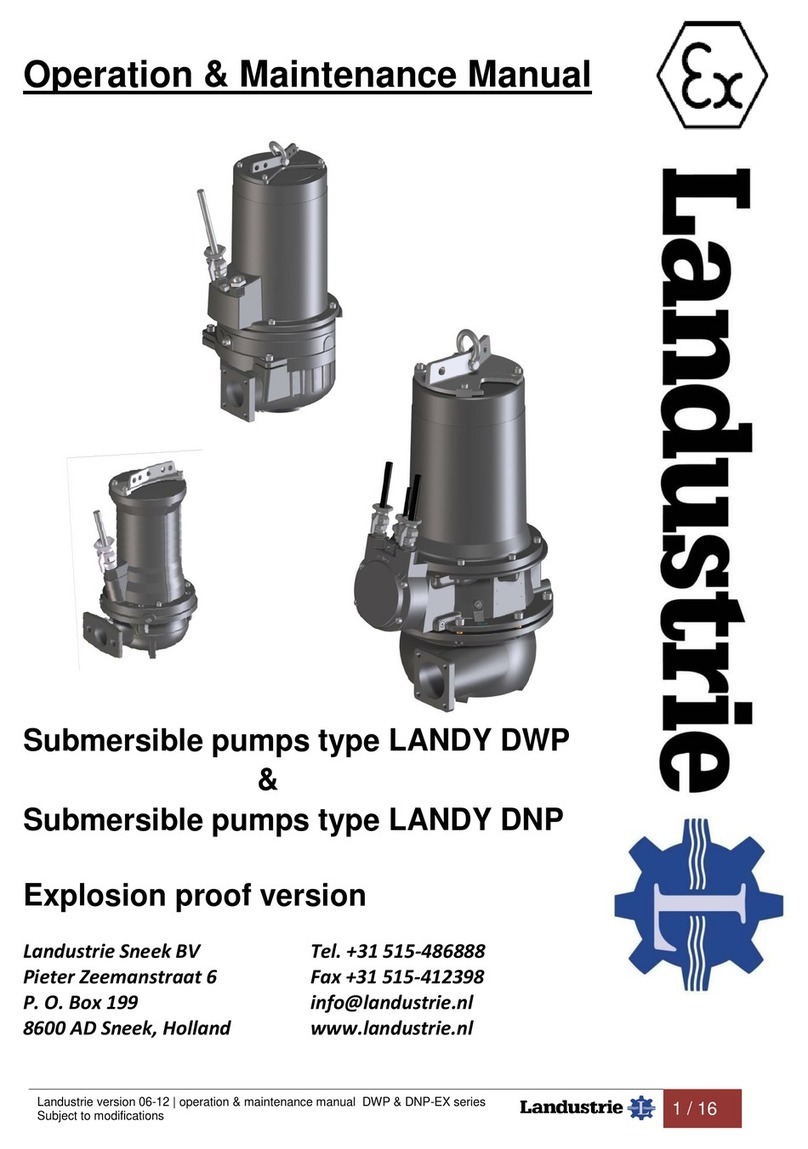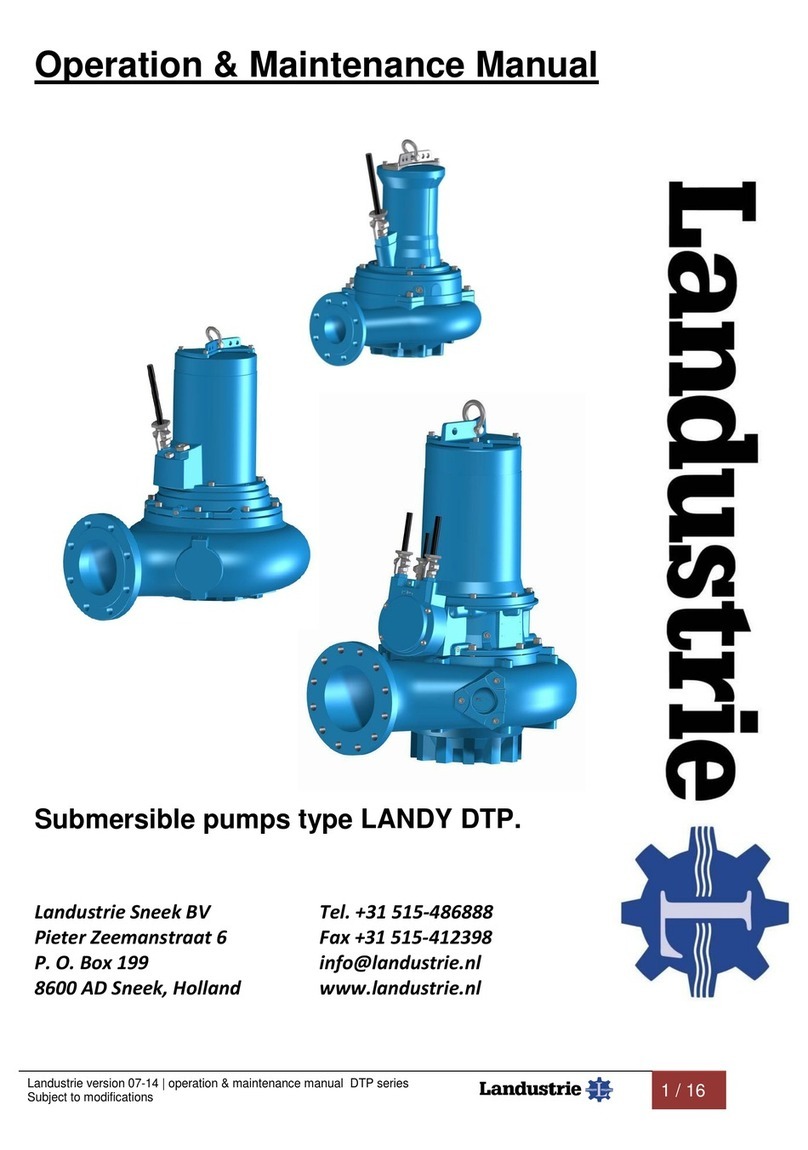
Landustrie version 06-14 | Operation & Maintenance manual BTP-SERIES
Subject to modifications
Contents:
1FOREWORD:...........................................................................................................3
2. SAFETY AND ENVIRONMENT:..............................................................................4
2.1 General safety instructions ...................................................................................4
2.2 Environment...........................................................................................................4
2.3 Applied Symbols:...................................................................................................4
3. TECHNICAL DATA: ................................................................................................5
3.1 General: ..................................................................................................................5
3.2 Construction:..........................................................................................................5
3.3 Main parts:..............................................................................................................5
3.4 Sound level:............................................................................................................6
4. CHECK POINTS BEFORE INSTALLATION: ..........................................................6
4.1 Delivery-check:.......................................................................................................6
4.2 Oil level:..................................................................................................................6
4.3 Power supply:.........................................................................................................6
4.4 Motor protection:....................................................................................................7
4.5 Motor check:...........................................................................................................7
4.6 Pump seals:............................................................................................................7
4.7 Installation:.............................................................................................................7
5. FIRST PUMP START: .............................................................................................8
5.1 Direction of rotation:..............................................................................................8
5.2 Current-check:........................................................................................................8
5.3 Start frequency:......................................................................................................8
6. INSTALLATION OPTIONS:.....................................................................................9
6.1 General: ..................................................................................................................9
6.2 Installation - H: .......................................................................................................9
6.2.1 Alignment of pump and motor shaft:....................................................................9
6.3. Installation R- .......................................................................................................10
6.4 Installation -V: ......................................................................................................11
6.5 Installation –K: .....................................................................................................11
6.5.1 Tension of the V-belts:.........................................................................................12
6.6 Maximum flange forces and moments: ..............................................................13
7. MAINTENANCE.....................................................................................................14
7.1 General: ................................................................................................................14
7.2 Maintenance schedule.........................................................................................14
7.3 Lubricants:............................................................................................................14
7.4 Oil level:................................................................................................................14
7.5 Oil change:............................................................................................................14
7.6 Flexible coupling:.................................................................................................15
7.6.1 Check winding element coupling arrangement –H:...........................................15
7.6.2 Renewal of the coupling -H: ................................................................................16
7.6.4 Mounting the "Spider" Coupling.........................................................................17
7.6.5 Disassembly of the "Spider" coupling................................................................17
7.6.6 Inspection of flexible couplings arrangement -V en -RF:..................................18
7.6.7 Renewal Flexible coupling installation –V and RF:............................................19
7.6.8 Adjustment and use of slide construction set-up RS and RF...........................20
8. TRANSPORT AND STORAGE:.............................................................................21
9.1 Seal flushing:........................................................................................................21
10. TROUBLE SHOOTING:.........................................................................................22
APPENDIX 1; Example of a direct-on-line connection diagram:................................23
APPENDIX 2; Example of a star-delta connection diagram: ......................................24
APPENDIX 3; EC- Declaration of Conformity: .............................................................25






























